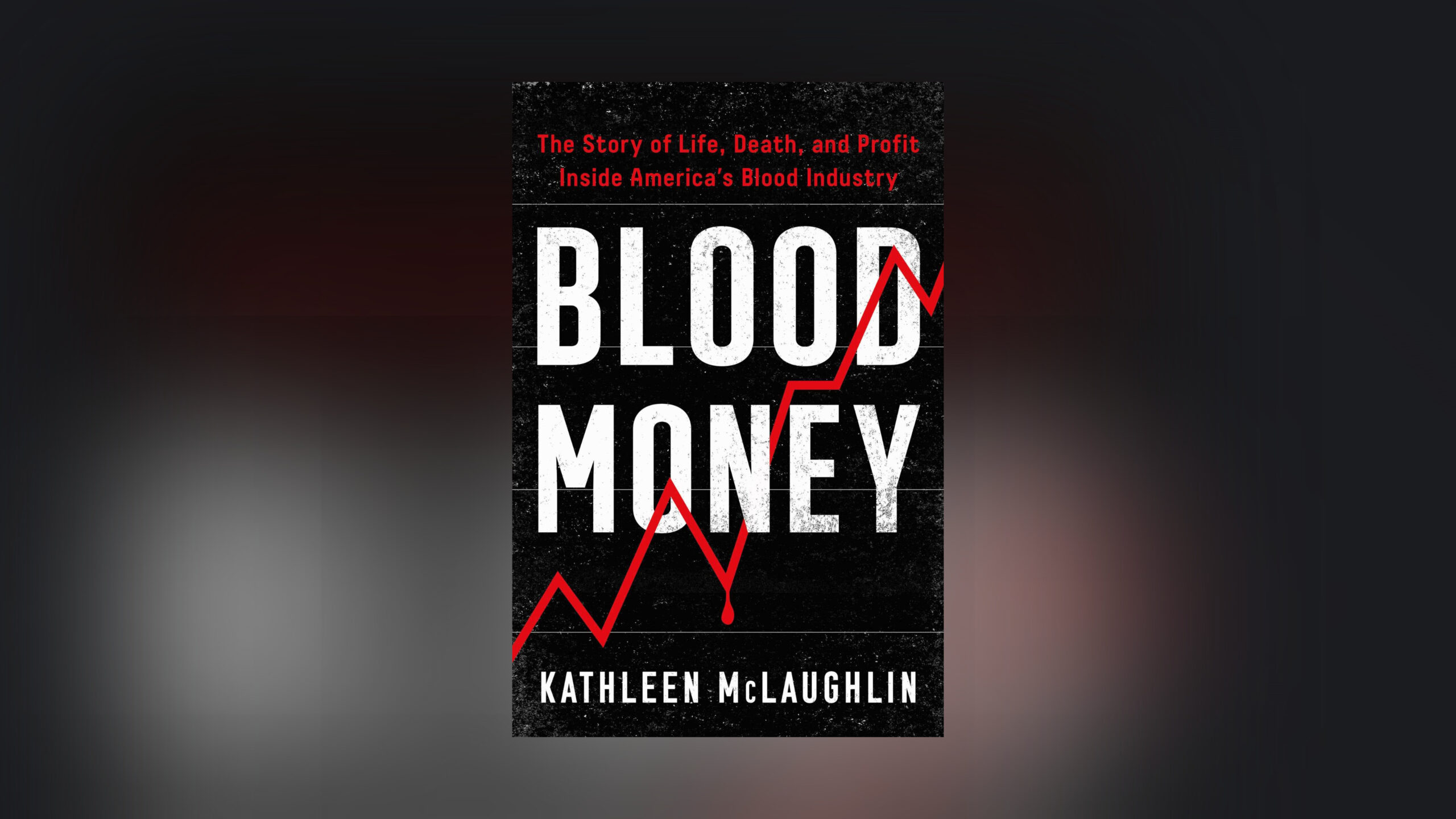
How is it that an industry that makes up $24 billion of the United States’ annual economy and 2.69 percent of its global exports exists almost entirely in the shadows of its society? In Blood Money, investigative journalist Kathleen McLaughlin exhumes the messy business of the blood plasma trade, which in the past two decades has managed to recruit tens of millions of participants who agree to sell this vital body part in exchange for a fee of about $20-$50 a pop. Most of these participants, McLaughlin argues, come from America’s “working poor”, a growing class of workers who are traditionally employed yet still struggle to make ends meet and must then turn to unsafe, stigmatized methods of supplementing their income each month.
As a relatively abundant commodity, blood plasma has proven itself to be extraordinarily profitable within the biomedical world, for the ease and cheapness with which it can be extracted, transported and later sold off for research and pharmaceutical purposes. An estimated 50 million donations are made in the United States each year, with about 14% of donors giving more than 50 times, according to the Protein Therapeutics Association. The maximum number of annual donations medically allowed is 104, which still leaves regular donors with the ability to make an extra $200-$300 dollars each month. For many struggling to scrape by in a divided economy, this is a price well worth the largely unspoken health risks.
McLaughlin’s approach to researching the blood business is nothing short of rigorous, consisting of thorough case studies conducted in several major plasma clinic hubs — namely cities with fraught economic infrastructures such as Rexburg, ID, Flint, MI and El Paso, TX. In her role as journalist, she travels from the rustbelt to the borderlands, extracting stories from those involved in plasma donation so as to fully grasp how these communities have rebuilt themselves after tough financial times on the shaky foundation of a workforce desperate for supplemental pay.
McLaughlin is also telling her own story here, in that her interest in the blood trade is actually a product of her complicity as a regular plasma therapy recipient. Having relied on regular blood transfusions to treat a rare neurological disorder since her mid-20s, she follows questions that have long irked her – from where does my medication come and from whom is it harvested?
“The flush of panic I feel at the start of an infusion is not my own lingering fear of needles — a fear I learned to cope with long ago. It’s knowing that my medication is built on the backs of quiet, hidden economic desperation. Those bags full of cloudy yellow liquid have been squeezed out of the class of our society that mostly doesn’t have big savings accounts, or well-off parents who can help with rent or mortgage, or jobs that pay well enough to not need the little extra cash that selling plasma provides.”
— Kathleen McLaughlin, author of Blood Money
Blood Money reads in many ways like a dystopian novel detailing the aftermath of widespread economic collapse. McLaughlin initially embarked on a quest to learn more about the people from whom her medicine derived. The end result was the discovery of an extremely ill economic system with literal vampiric tendencies that fuels itself off of the bodies of low-waged workers.
Though the blood business in America technically exists above ground as a legal enterprise, McLaughlin documents plenty of instances in which the day-to-day practices of plasma harvesting have veered into the domain of criminality. From financially exploiting the scientific value of COVID antibodies to non-FDA approved anti-aging measures and multi-level marketing scams touted by Silicon Valley’s elite, for-profit plasma has inspired a proliferation of exploitative behavior hiding under the guise of health industry entrepreneurship.
The shady recruitment practices, sloppy hygiene measures and hush-hush approach to data about the long-term health impacts of frequent donation, when looked at together, all constitute a highly criminal operation at work. At the same time, however, the abuses of the blood economy are so disparate and hard to trace that the task of prosecuting, much less reforming, seems like a nearly impossible one. Even McLaughlin admits that it is not so much one particularly profit-driven individual or corporation to blame, but rather the failures of America’s social safety nets.
Have a tip we should know? [email protected]

